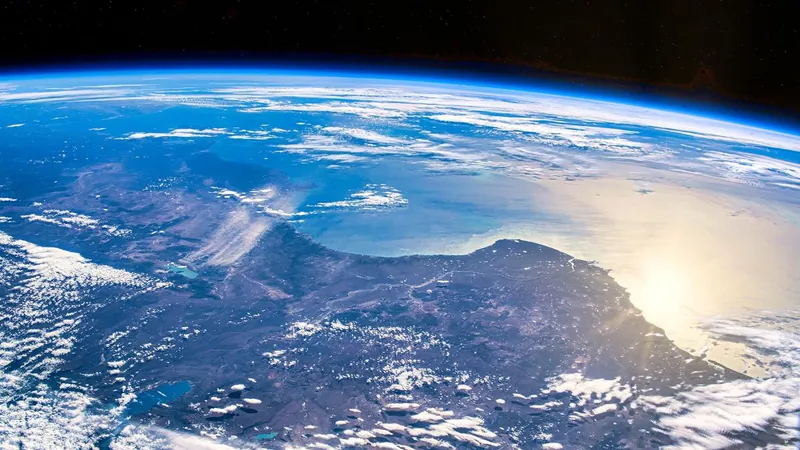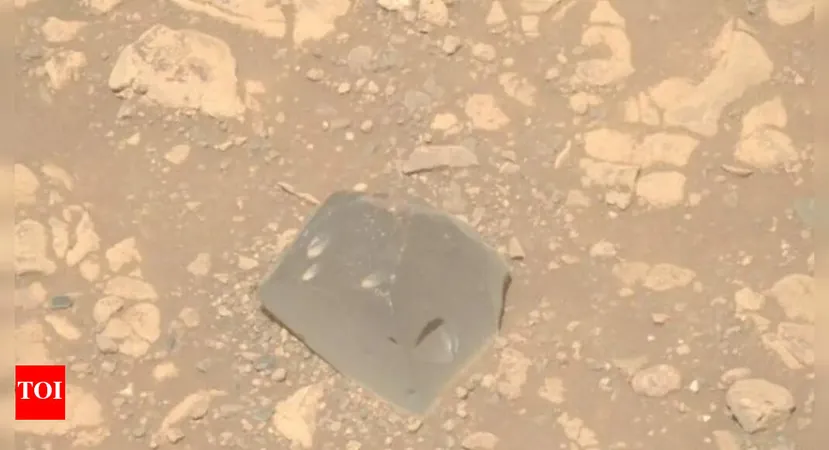
Earth's Ancient Crust Holds Secrets: Are We Wrong About Plate Tectonics?
2025-04-13
Author: Wei
New Study Challenges Established Beliefs on Plate Tectonics
A groundbreaking study has unveiled that our planet's early crust, known as the "protocrust," bears a striking resemblance to today's crust. This revelation could shake the very foundations of how we understand Earth's geological history.
Chemical Mysteries Unraveled
Many scientists previously believed that the unique chemical signatures found in modern continental crusts only emerged through the subduction process—where one tectonic plate dives beneath another. However, the latest research suggests that these signatures can appear without the need for active plate tectonics.
Debate on Earth's Plate Tectonics Origins
The findings call into question the timeline of when plate tectonics actually began on Earth. For decades, researchers have theorized that Earth's surface split into tectonic plates nearly 4 billion years ago—almost instantly after solid ground formed. This study challenges that notion.
Lead author Craig O'Neill, a geophysicist at Queensland University of Technology, stated, "The argument for early plate tectonics based on these signatures is flawed. Just because these signatures are present today doesn't mean the Earth has always operated this way."
The Chemistry of Early Earth
The trace elements at the center of this debate—like titanium and niobium—have behaviors that depend heavily on their surrounding conditions. Researchers discovered that early Earth's molten environment was vastly different from what it is now. After Earth solidified from its volcanic origins, iron-rich materials sank, forming the core and changing the mantle's composition.
This transformation means that magma in modern subduction zones may not reflect the same chemical processes that occurred when the Earth was young.
Rethinking Early Evidence of Plate Tectonics
O'Neill emphasizes that many arguments supporting the idea of early plate tectonics may not actually indicate tectonic activity but rather older geological formations. While localized subduction could have occurred due to impacts from celestial debris in the young solar system, a complete transition to a modern plate tectonic system likely happened much later—between 3.2 and 2.7 billion years ago.
Looking Ahead: The Future of Geological Research
As scientists continue to explore these findings, O'Neill suggests that upcoming debates will focus on how these different chemical signatures from the early Earth evolved over time. Understanding when and how modern tectonics became essential in shaping our planet will likely transform our comprehension of Earth’s geological history.


 Brasil (PT)
Brasil (PT)
 Canada (EN)
Canada (EN)
 Chile (ES)
Chile (ES)
 Česko (CS)
Česko (CS)
 대한민국 (KO)
대한민국 (KO)
 España (ES)
España (ES)
 France (FR)
France (FR)
 Hong Kong (EN)
Hong Kong (EN)
 Italia (IT)
Italia (IT)
 日本 (JA)
日本 (JA)
 Magyarország (HU)
Magyarország (HU)
 Norge (NO)
Norge (NO)
 Polska (PL)
Polska (PL)
 Schweiz (DE)
Schweiz (DE)
 Singapore (EN)
Singapore (EN)
 Sverige (SV)
Sverige (SV)
 Suomi (FI)
Suomi (FI)
 Türkiye (TR)
Türkiye (TR)
 الإمارات العربية المتحدة (AR)
الإمارات العربية المتحدة (AR)